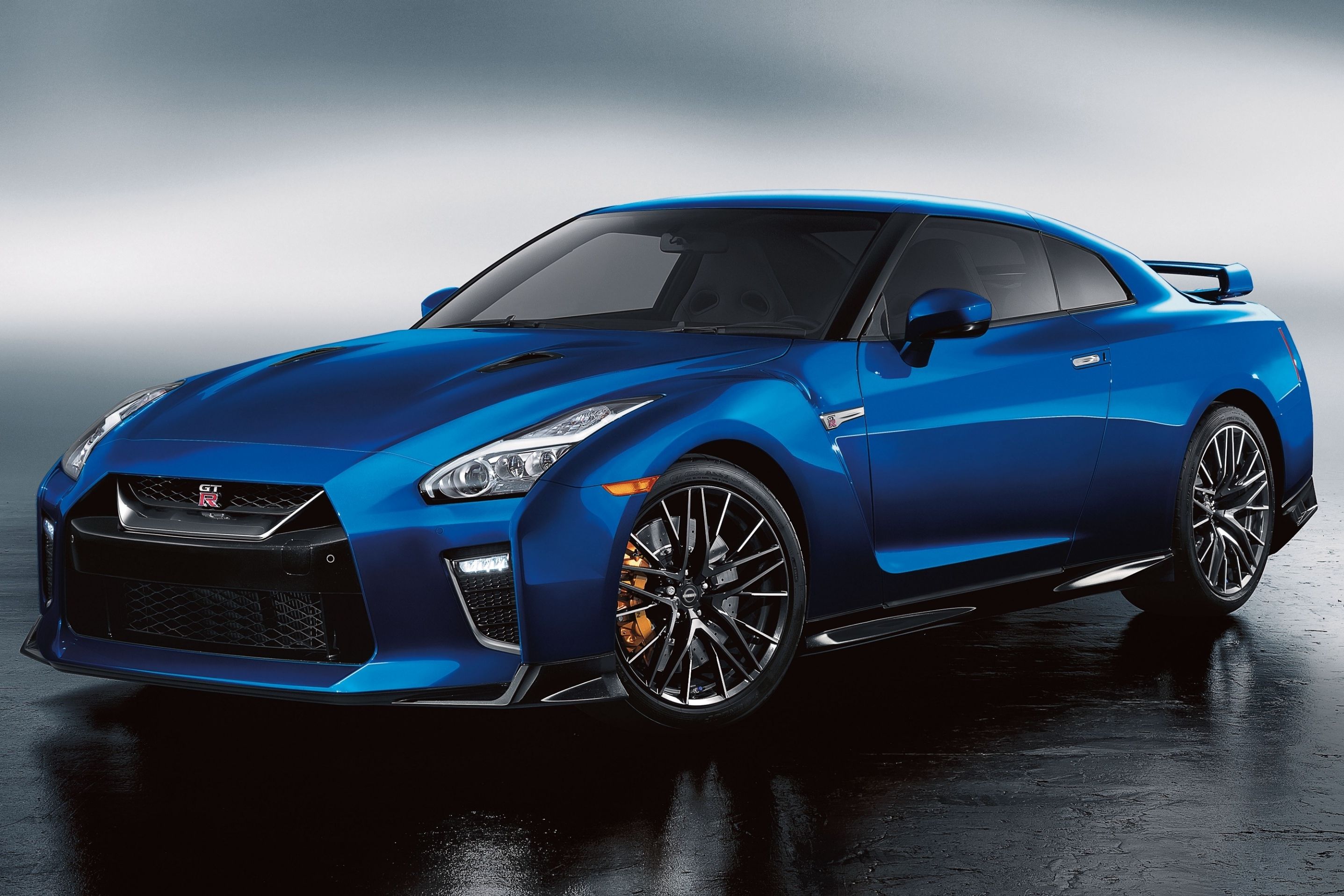
When a car is done so well the first time around, its eventual successor has something of a burden from the get-go. That was, more or less, the case of the fourth generation Nissan Skyline GT-R, more commonly known as the R33. As we discussed in great detail yesterday, its R32 predecessor was, in a nutshell, damn near perfect. Considering it was more of a niche high-performance sports car that wasn't even exported to the typically highly lucrative North American market, the R32 sold phenomenally well.
Instead of the original 5,000 or so units planned in accordance with homologation requirements, over 43,000 R32's were built by 1994. So how did Nissan go about improving its successor? Well, it wasn't easy. For starters, the R33 retained the R32's 2.6-liter twin-turbo inline-six engine. Output also remained the same at 276 hp, though the R33 was given a broader torque band, making the engine more flexible. Even the five-speed manual gearbox was exactly the same. However, the R32 did have a few mechanical faults, but leave it to the always perfectionist Japanese engineers to sort them out. For example, the R32 was plagued with a weak oil pump driver collar, which had a habit of failing in higher power applications.
A wider collar was thus utilized. The R32's innovative ATTESA-ETS all-wheel-drive system also received some improvement tweaks, as did the multi-link suspension. Overall curb weight slightly increased from 3,146 lbs. to 3,400 lbs. From the outside, the R33 was very much an evolution of the R32. Aerodynamics were improved and ride height was slightly lowered. The R33 had its official debut in January 1995. Both the standard version and the V.spec model were unveiled together. As was the case with the R32 V.spec, the new V.spec had a slight weight increase over the base Skyline GT-R (22 lbs.) but was equipped with a sportier suspension and lower ground clearance.
Its AWD system also included an active limited slip differential and a four-wheel independent channel anti-lock braking system was standard. At around the same time these cars launched, Nissan released a new GT-R V.spec N1 trim. Like with the R32 N1, features like the ABS, air conditioning, sound system, rear wiper and trunk carpet were removed in order to trim weight. And like the R32, the R33 went racing but it didn't achieve success right away. That changed in 1995 when Nissan's motorsport division, Nismo, came in to help out. The result was the GT-R LM, which was raced at the 24 Hours of Le Mans where it finished 10th overall and 5th in its class. The following year it finished 15th overall and 10th in its class.
There was, however, one significant difference between the two endurance cars: the engine. The latter GT-R LM was powered by a 2.8-liter version of the familiar twin-turbo inline-six that produced an impressive 600 hp. Because of those same homologation rules, Nissan built a street-legal R33 LM for 1996. Available only in Champion Blue, the R33 LM featured a hood-splitter lip that directed air to the upper front aperture as well as a carbon fiber rear wing and carbon fiber inserts on the rear wing fins. Output was increased to 305 hp and, like the race-going version, AWD was dropped in favor of RWD. Interestingly, not all of these cars were based on the same R33 GT-R; 14 were based on the V.spec while the remaining on the base model.
A total of 98 were sold in the Japanese market. But what about that improved inline-six? Wouldn't it too find its way to a production car? That came in 1997 with the R33 400R. R stood for racing and overall development was handled by – you guessed it – Nismo. The bored and stroked engine came with several improvements, including upgraded rods, polished ports, high lift camshafts, a new oil system, larger exhaust manifolds and higher output turbochargers, to name just a few. Nismo also added a better exhaust, twin-plate clutch, and intercooler system. The exterior was modified with wider fenders, side skirts and a restyled rear bumper.
The front bumper came with larger air scoops and the hood and rear spoiler were composed of carbon fiber. Output? Try 400 hp and 347 lb-ft of torque. Performance was equally impressive, clocking in a 0-60 mph in four seconds flat. AWD was once again standard. The initial plan called for 100 examples but only 44 were produced in the end. The reason why was because the R33's time was up. 1998 was its final production year. A total of 16,520 R33s were built. Also worth mentioning is something so ridiculously awesome, the Autech Skyline GT-R 4-door. Yes, you read that right. Autech, another subsidiary of Nissan, also specialized in modification, and it built the 4-door specifically for the Skyline's 40th birthday.
Remember, the Skyline was initially a sedan when it launched back in 1957. It received all of the two-door GT-R's tech, from its engine to the bucket seats. Even Nismo couldn't resist improving this super sedan by launching a tuned version of its own in time for the 1998 Tokyo Motor Show. So, was the R33 as special as its R32 predecessor? Not as much, no, but it still left its mark in both racing and amongst enthusiasts. But Nissan learned a lot from the R33 and therefore had a shorter life than the R32; a successor arrived in 1999.


